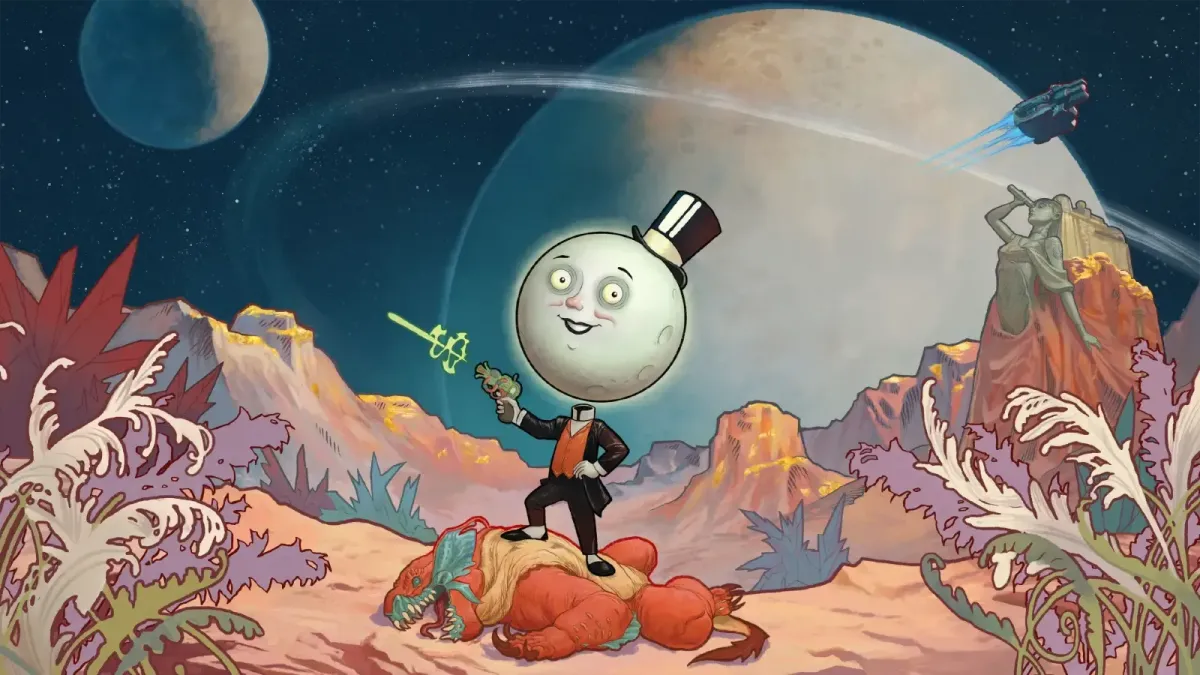
Six years after Obsidian Entertainment delivered their satirical space RPG to an audience hungry for something that scratched that New Vegas itch, The Outer Worlds 2 arrives with bigger worlds and even greater ambitions. This sequel builds upon the foundation the first game laid: more expansive, more mechanically deep, more visually impressive… But most importantly, more vibes.
The Outer Worlds 2 takes a big step away from Halcyon and drops you into the Arcadia system, a fresh setting that immediately distances itself from the first game's more contained adventure. You play as an Earth Directorate agent investigating mysterious rifts tearing through reality. The stakes are higher this time around, and Obsidian leans slightly into the cosmic angle while maintaining that sarcastic edge the first game is known for.
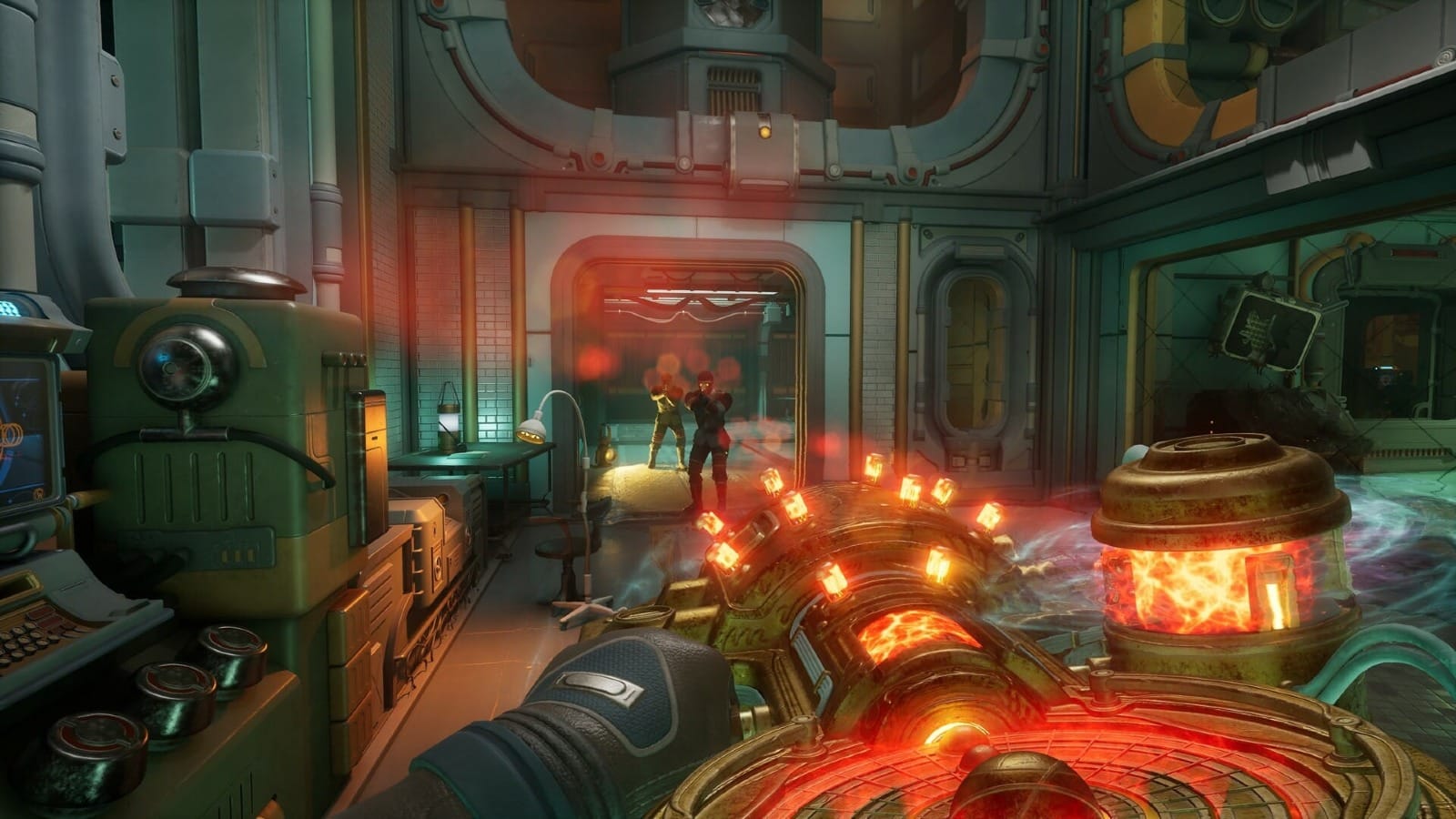
The alternate timeline premise remains the same. President McKinley was never assassinated in 1901, Roosevelt never took power, and corporate monopolies went completely unchecked. This capitalist dystopia appears even more absurd in Arcadia, where the religious Order of the Ascendant clashes against the supposedly benevolent Protectorate, while Auntie Cleo's unethical experiments continue in the shadows. Factions add layers to an already complex political landscape, and the game does a great job of making each group seem morally grey rather than straight up evil or good.
Your initial crew members are Niles and Valerie, but you can recruit others like Marisol and Aza by exploring off the beaten path. Companion banter sounds natural and well-written, and captures Obsidian's trademark wit. These aren't just quest dispensers but characters who will actually leave your party if you betray their personal goals. They each have their own backgrounds, stories, and ambitions. The consequence system returns in full form.
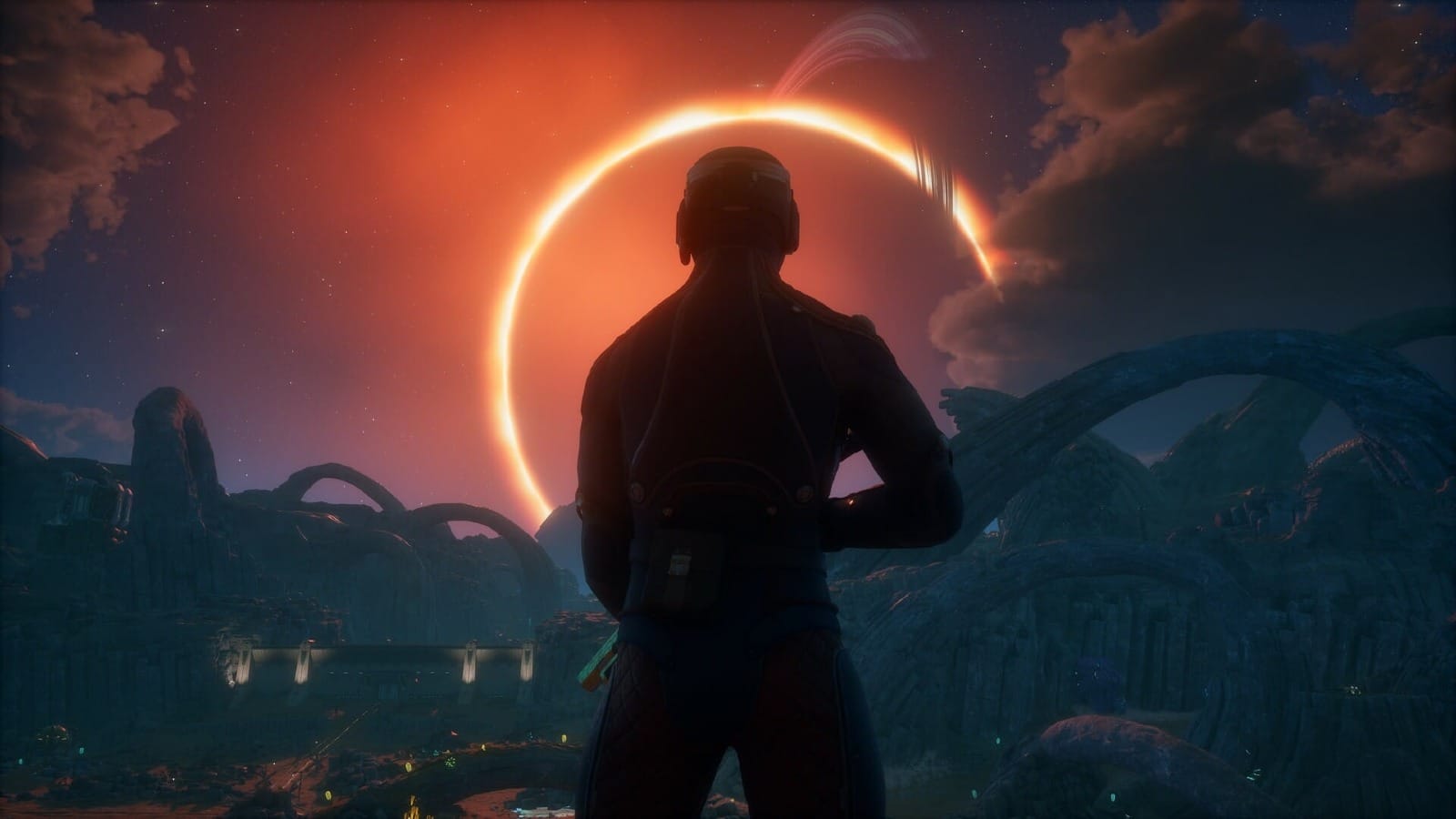
Speaking of the “beaten path”, it's well worth your time to leave it. There are entire mechanics out there you'll miss if you don't explore. For instance, when I was looking for a side mission, I came across two characters stuck in a house that was on a pneumatic lift. It wasn't working, and one of their compatriots who wanted to go for help hit the ground in front of me after a fatal leap. Turns out, he had thruster boots that gave me a double jump, and after requisitioning them for Earth Directorate purposes, I was able to help the two come back to terra firma and then keep the boots for my troubles.
The central mystery about the rifts and Arcadia's skip drive technology creates a solid narrative, but the smaller stories about corporate greed and personal survival hit harder. There are a ton of side quests that emerge naturally, sometimes even locking you out of completing them if you didn’t spec into the correct trait. For example, there was one involving a Pointe and a water valve that required 11 points in Engineering to access, which I couldn't meet. These locked paths make subsequent playthroughs seem worthwhile.
This does, however, lead to a bit of a conundrum. The Outer Worlds 2 presses you to choose a path when speccing, as opposed to being a jack-of-all-trades. Be forewarned: if you try to spread out your skill points too thin, you'll often miss out on opportunities to interact with the system. It can seem a bit frustrating at first, but as mentioned above, it leads you to come back later or in a new playthrough.
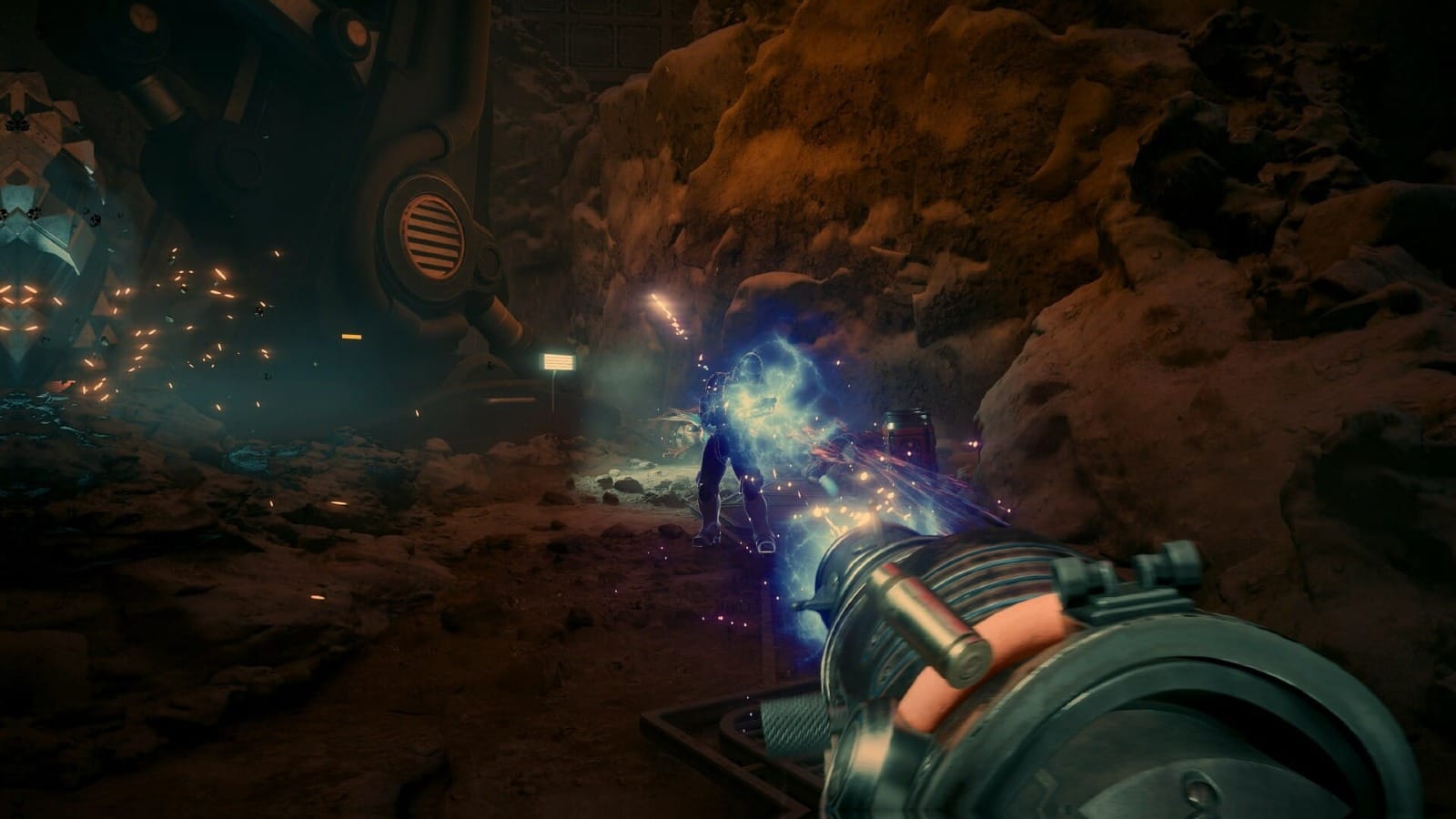
The first Outer Worlds felt somewhat limited in its viewing options. Why can I spend hours in the character creator when I can’t even see myself in-game? The sequel addresses this by offering a full third-person perspective alongside first-person. However, I’ll be upfront and say that the third-person perspective does play a little jankily. The expanded field of view helps with situational awareness, but the animations don't quite match the smoothness of first-person.
Shifting to equipment, you can equip helmets and armor, each with perks and mod slots. Weapons come in melee, ranged, and throwables. The weapon variety starts off extremely limited in the opening hours, but starts to diversify after you leave the first planet. You’ll have access to swords, hammers, scythes, pistols, rifles, shotguns, and snipers, all color-coded with a classic rarity scheme. Legendary unique weapons make a return, and are all extremely impressive. The Chainspark Cannon offers satisfying energy blasts, the Thunderstruck hammer delivers meaty melee strikes, and my personal favorite, the Prototype N-Radiated Scythe, proves appropriately flashy and stylish.
Gadgets add tactical depth. Slowing down time works well here with the Tactical Time Dilation device, returning from the first game. You’ll get your hands on temporary shields to help against Zyranium gas, a dematerializer for getting rid of those pesky bodies, and an N-Ray scanner that reveals invisible enemies and lets you see through walls. Perhaps the coolest gadget is the double jump boots that open up vertical exploration in satisfying ways. Later on, you’ll also come upon a tool that closes rifts called the Rift Anomaly Modulator, but it serves more of a narrative purpose.
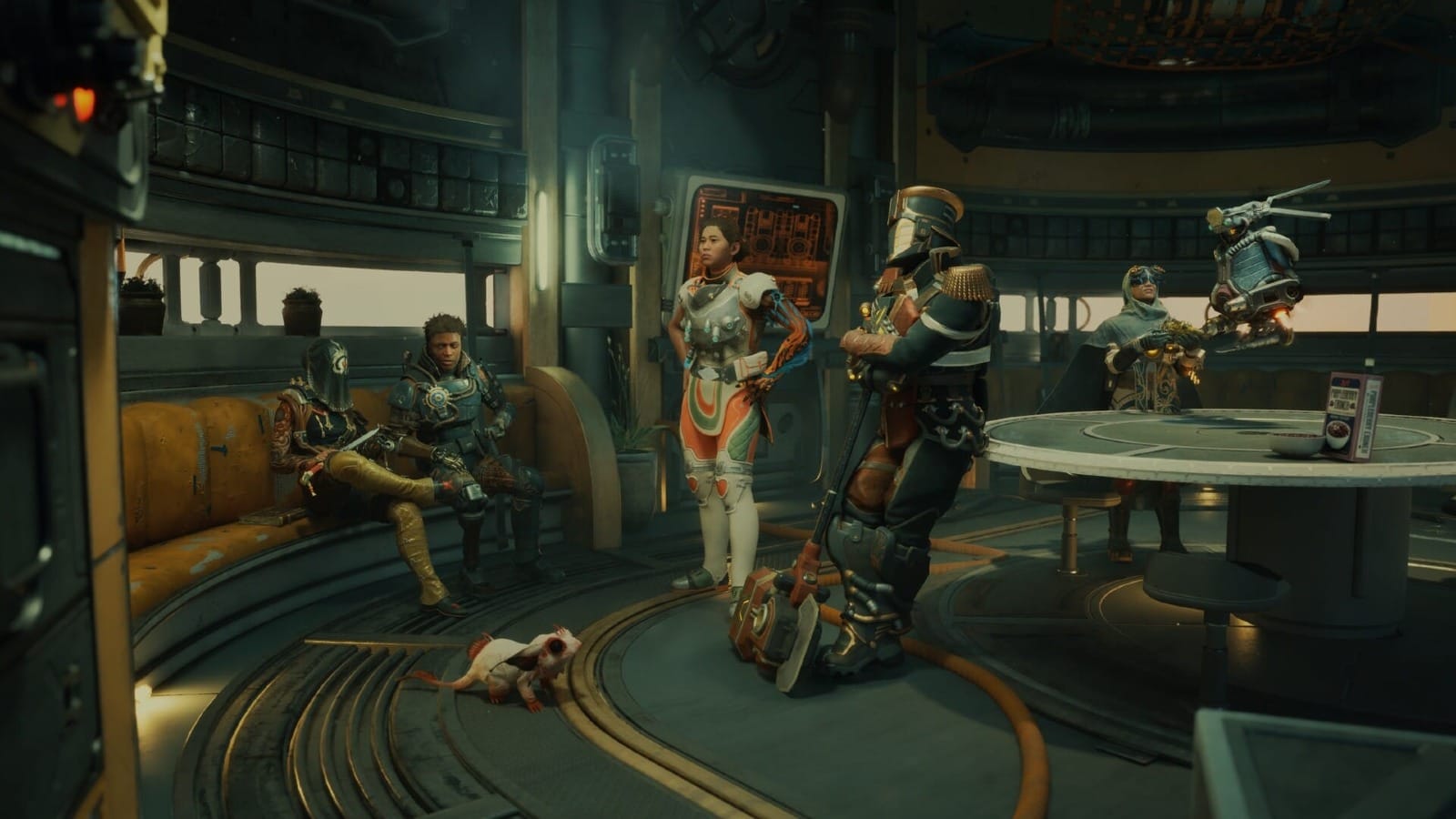
Healing is done in the same fashion as the first Outer Worlds, through various inhalers that simultaneously heal you as well as poison you if you abuse them too much. AutoDocs scattered throughout the world let you patch yourself up, while Trauma Kits revive you if you are downed. And of course, you can eat and drink food to get your health back up, too.
Stealth remains viable, though takedown animations could use work. They lack the visceral impact that makes stealth satisfying in other games, such as Dishonored. You can pickpocket NPCs if you invest in the right perk, which opens up non-lethal approaches to many situations. Alternatively, you can also go completely ballistic and kill everyone on sight, turning yourself into an outlaw. This freedom to play your way matches what Obsidian promised, though your reputation with certain factions will be tarnished.
Melee combat is improved, but it still struggles. The animations lack weight, while hit detection is sometimes inconsistent. When you're swinging the gigantic hammer, you want to feel each impact, which you do to some degree, but it still often results in a mindless button mash of the same animation over and over.
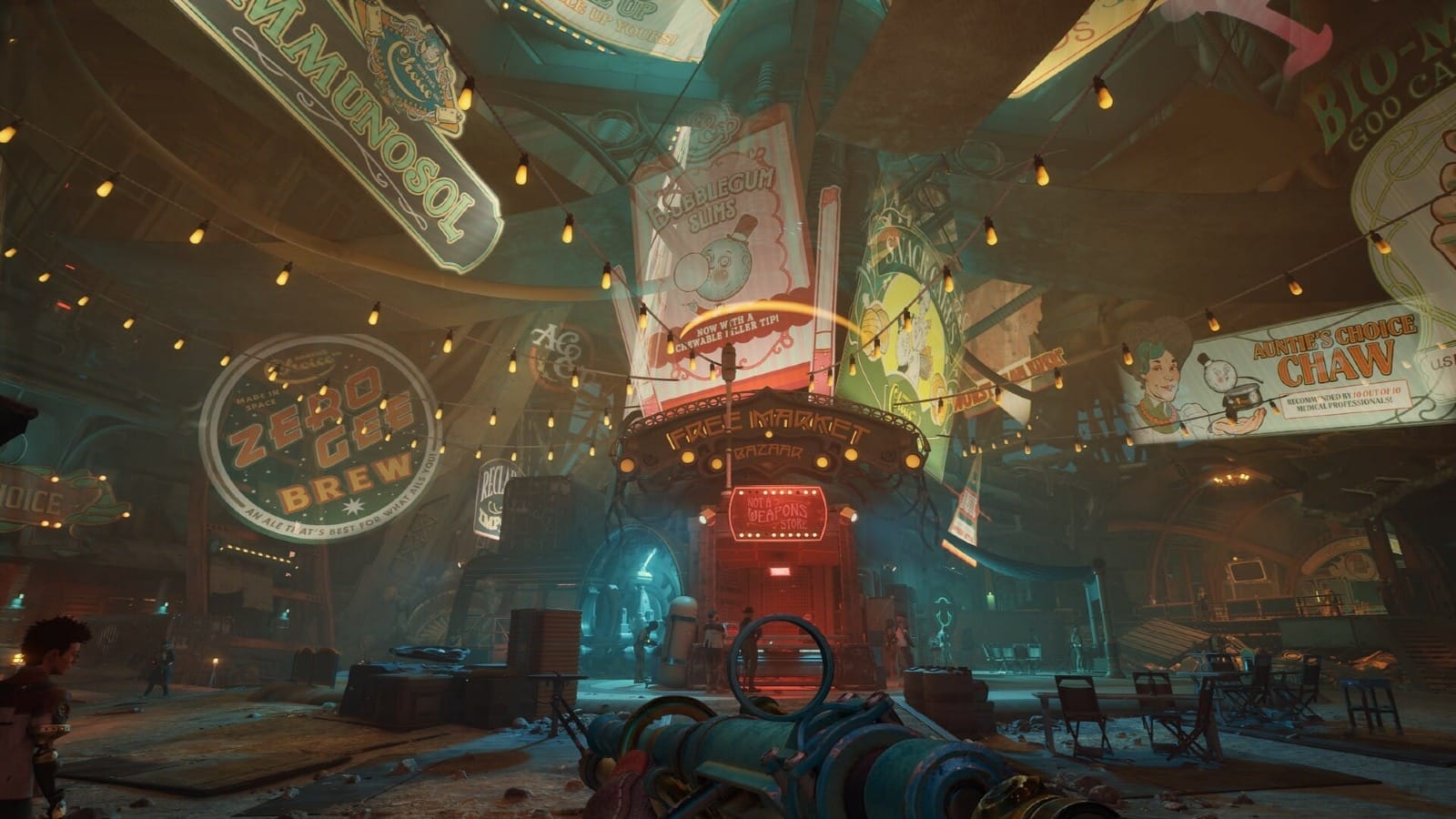
Skill checks are spread throughout conversations and environmental interactions. You might augment a robot, grab a keycard from a terminal, or lockpick a door, depending on your build, to get to the same destination. It’s these immersive sim elements that allow player builds and choices to dictate the gameplay experience. How you allocate points matters because there’s no way to respec your character this time around. Yup, you heard that right, every choice you make is permanent. If you invest poorly early on or want to dramatically change your playstyle, you're out of luck without starting fresh.
Puzzles are scattered throughout to break up the monotony of combat. Nifty gadgets such as the N-Ray Scanner are sometimes crucial for solving environmental riddles. Need to get past some deadly spinning turbines? Use the Tactical Time Dilation gadget to slow time down and walk past in a jiffy! The game’s systems are designed to reward creativity and critical thinking, rather than repetitive copy-pasted slop.
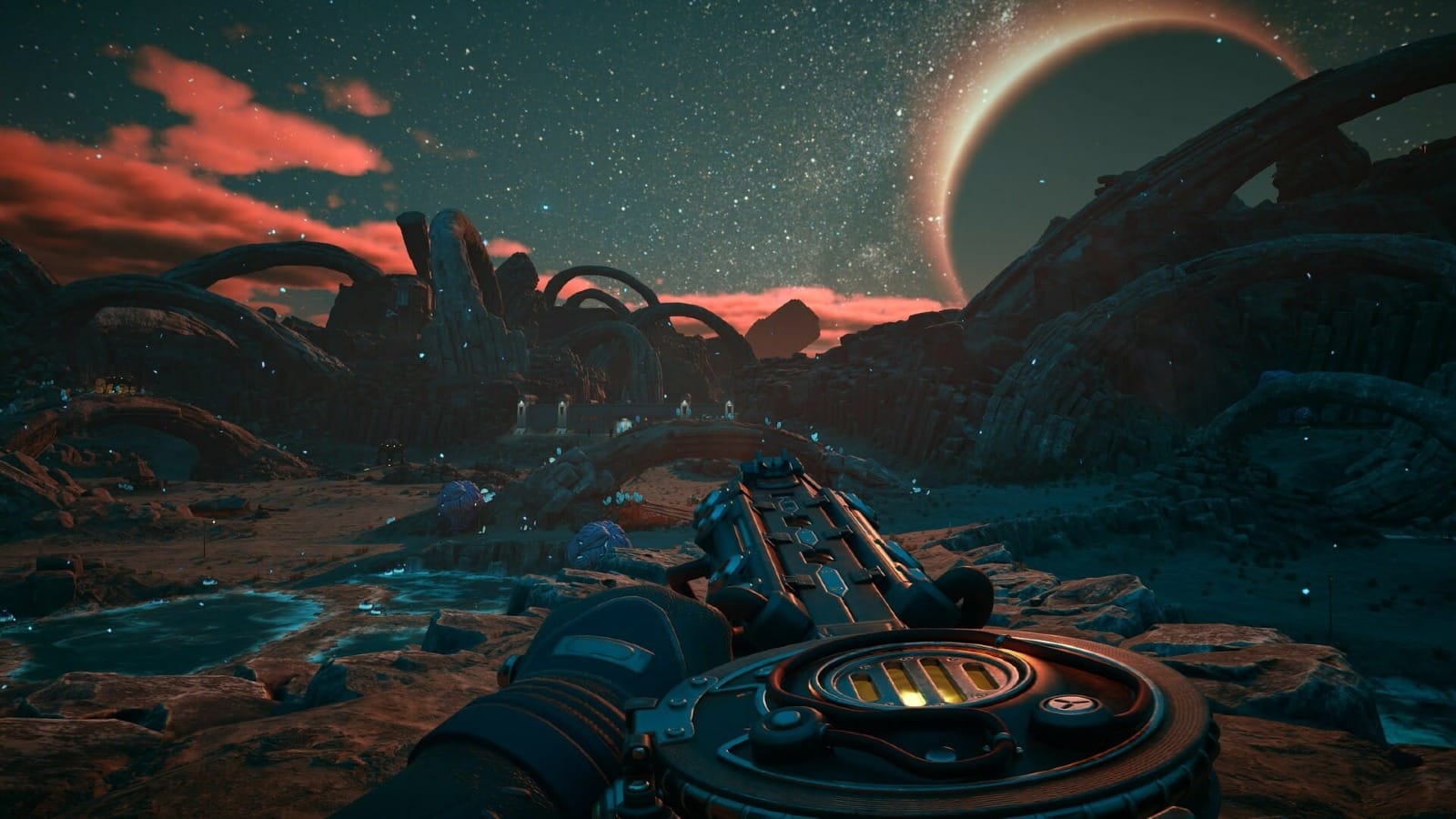
Character customization starts with choosing your background and motivation for joining the Directorate. My character ended up as Renegade, Brilliant, and N-Radiated, a combination that shaped both dialogue options and gameplay abilities. The trait system gives positive and negative modifiers that define your playstyle. What makes this particularly interesting is that random flaws can present themselves during gameplay based on your actions. Get hit by too many energy weapons? You might develop an energy vulnerability. Spend too much time crouching? Expect bad knees.
Each time you level up, you are allocated skill points that you can spend on typical role-playing stats such as engineering, speech, leadership, or hacking. The perk system returns, on top of allocating your skill points. Companion perks also level up independently, giving your crew members special skills that complement your own build. This interconnected progression makes party composition mean more than just having extra bodies to absorb bullets.
Exploration makes up the meat and bones of this vast and open role-playing game. Make sure to talk to every NPC, examine every item, and pick up everything you can. You are rewarded handsomely for veering off the beaten path, often in very natural ways. The companion recruitment system is one such example. Instead of drip-feeding party members through the main story, you also find them scattered across Arcadia's various planets.
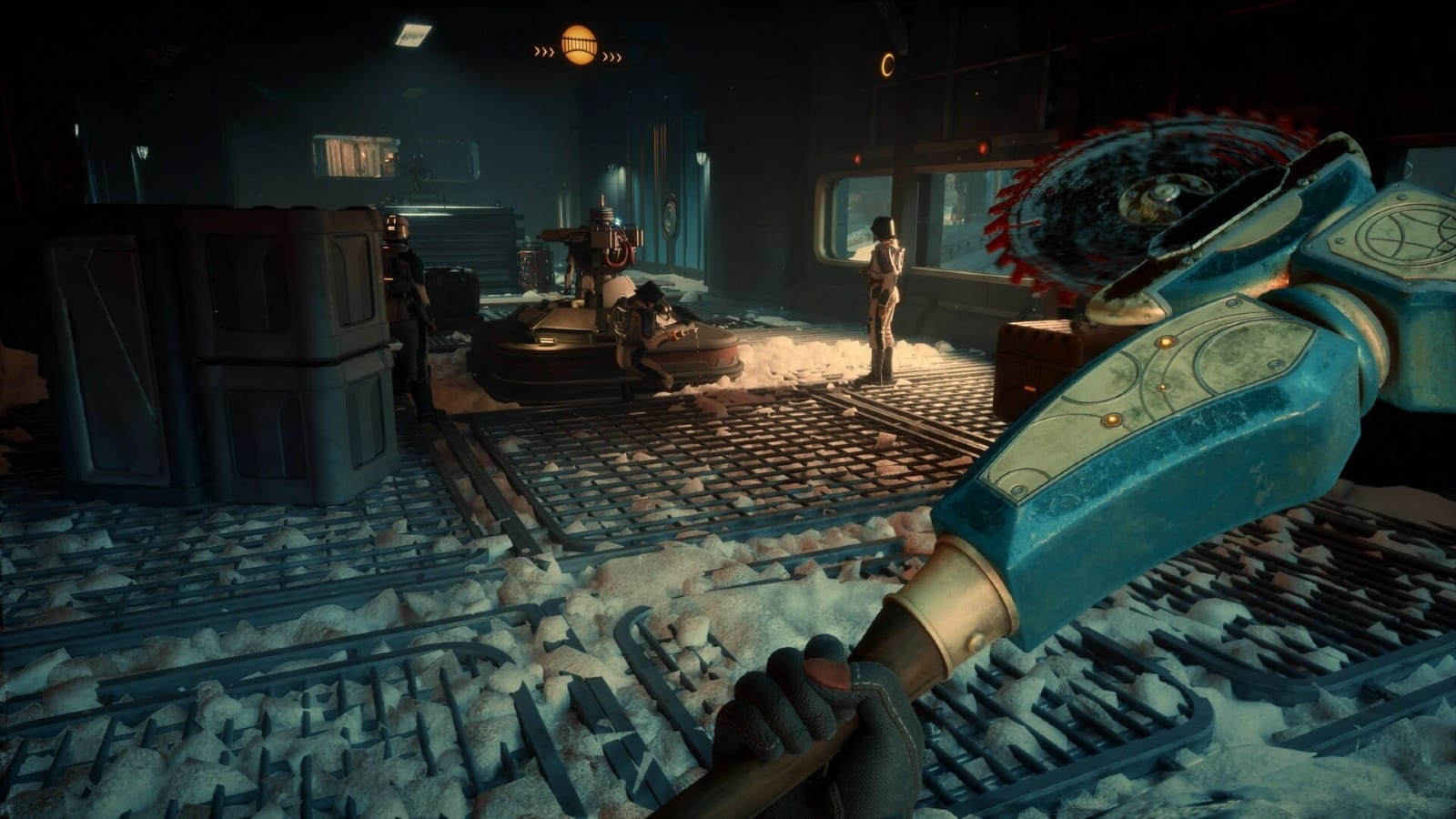
The first Outer Worlds drew criticism for ending somewhat abruptly after a relatively short campaign. The sequel takes this feedback into account, but this isn’t as expansive as something like Starfield. There are a handful of planets and space stations for you to visit on your trusty ship, the Incognito. Collectibles like tossball cards and pitchball cards give completionist objectives, but they also grant bonuses such as improved max health or increased weapon damage.
Unfortunately, The Outer Worlds 2 still lacks traditional endgame loops like New Game Plus, randomized dungeons, or repeatable high-level content. Before you enter the final area, the game warns you that it is the point of no return. Most players will likely wrap up after one or two playthroughs to try out different builds and playstyles, but that’s about it.
Performance on PS5 comes in three flavors: Performance, Balanced, and Quality modes. Loading times sit around six seconds from the main menu, which is decent but not exceptional. What's less forgivable are the hard crashes. The game crashed on me a couple of times during my playthrough, forcing a restart from previous checkpoints and costing me some progress. I’m hoping the Day One patch will fix these right up.
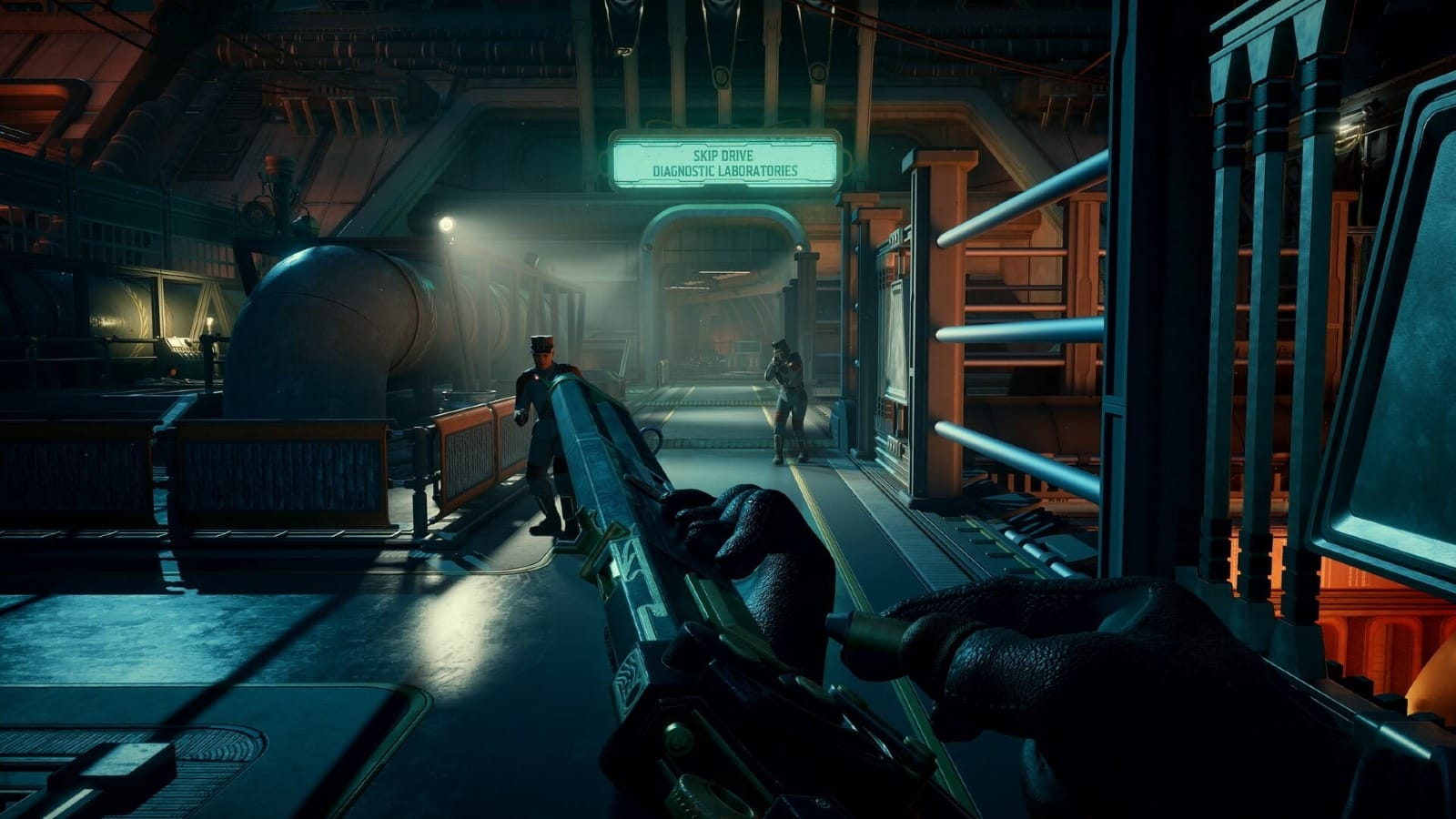
The absence of seamless travel does inevitably hurt the immersion. Companions spawn awkwardly next to you instead of following naturally, and entering dungeon-equivalent areas triggers loading screens instead of maintaining world cohesion. These design choices seem a bit dated compared to contemporary open-world games. That said, it is improved in this second outing, with more buildings being explorable right away.
Controller sensitivity also ships with subjectively stiff default settings. This might just be a me thing. The right stick sensitivity is way too low out of the box, and I had to crank it up way higher to feel comfortable. There were also instances when navigating menus wouldn’t register with the controller input, such as scrolling left and right.
Obsidian promised "more graphics" in their marketing, and to their credit, The Outer Worlds 2 looks noticeably better than its predecessor. The art direction keeps that retro-futuristic corporate aesthetic, but environments are more detailed and expansive. Every world’s landscapes pop with color, and character models see some improvement, though some animations remain inconsistent.
What's disappointing is the absence of a photo mode. The game includes an idle camera mode that automatically pans around when you're not providing input, but there's no manual photo mode to capture those stunning vistas or hilarious ragdoll moments. Maybe it’ll be added in the future?
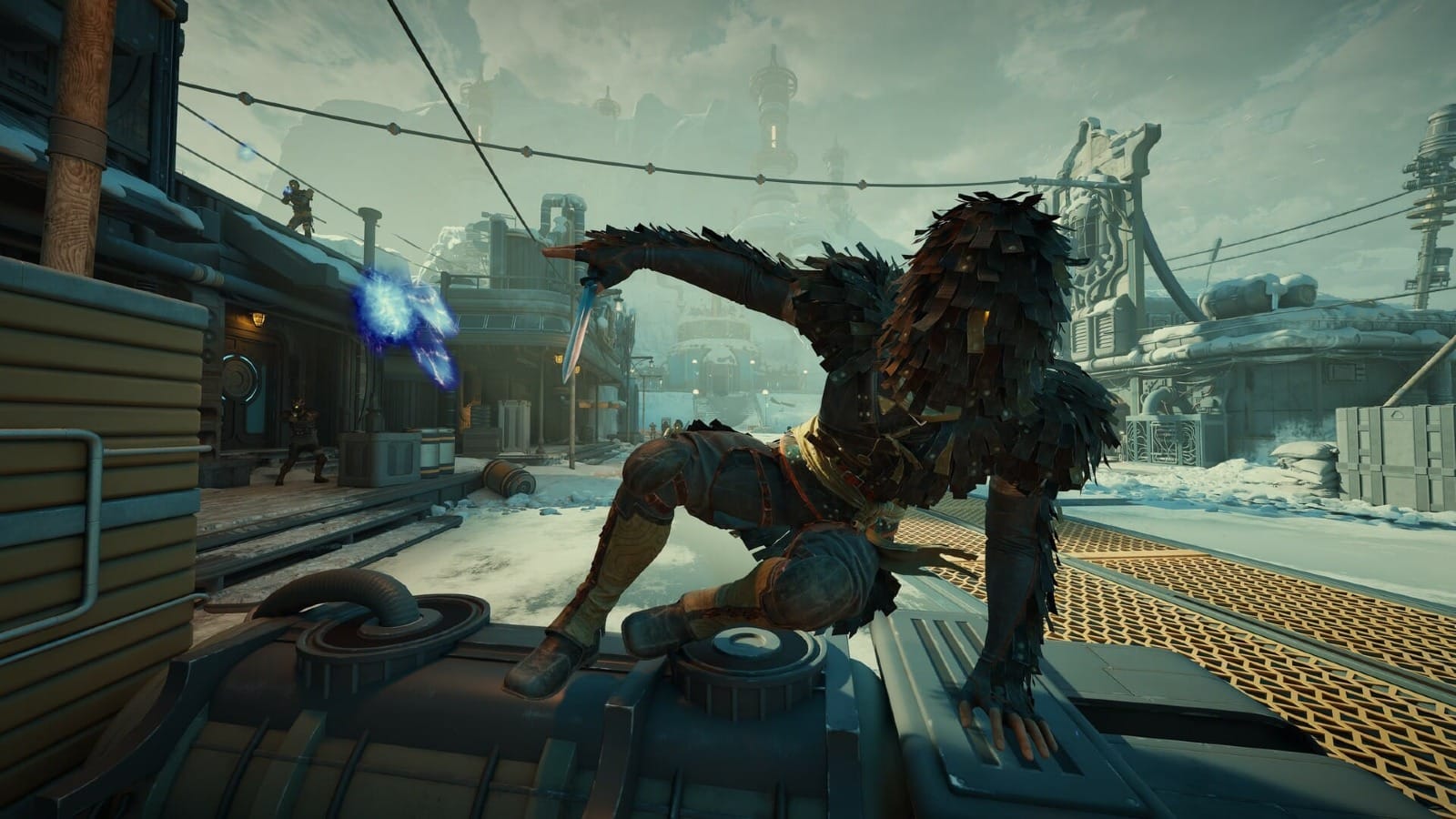
Sound design hits hard. My favorite is probably the wireless radio system that adds passive entertainment and style during exploration. Wireless Free Arcadia, Grand Plan Wireless, and Protectorate Sanctioned Wireless each present different programming and music. These stations supply context about Arcadia's political situation and inject some soothing vibes during long treks between objectives. It's a small touch borrowed from Fallout, but it clicks. For all else audio: weapon sounds come across as punchy and distinct while voice performances generally land well.
The Outer Worlds 2 represents a clear step forward from its 2019 predecessor in the most important ways. The expanded weapon variety, improved gadget systems, and more ambitious scope address common criticisms of the original. Obsidian clearly listened to feedback about scale and mechanical depth. The result is a bigger, more complex RPG that grants genuine player agency through its faction systems, skill checks, and consequence-driven narrative. The game could use some more technical polish, given the hard crashes, missing voice lines, and inconsistent animations.
The Outer Worlds 2
Great
If you craved a sprawling space opera with weighty choices and layered systems, The Outer Worlds 2 achieves that vision. Obsidian succeeds in expanding the scope, immaculate vibes, and mechanical depth of the first game whilst keeping the sharp writing and player choice they’re known for.
Pros
- Expanded scope with diverse planets and varied weapons
- Sharp satirical writing with meaningful choices
- Deep character customization where build choices actually matter
- Rewarding exploration and natural progression
Cons
- Technical issues: hard crashes, missing voice lines
- Janky melee animations
- No respec option
- Missing photo mode
This review is based on an early PS5 copy provided by the publisher. The Outer Worlds 2 comes out on October 29, 2025.

